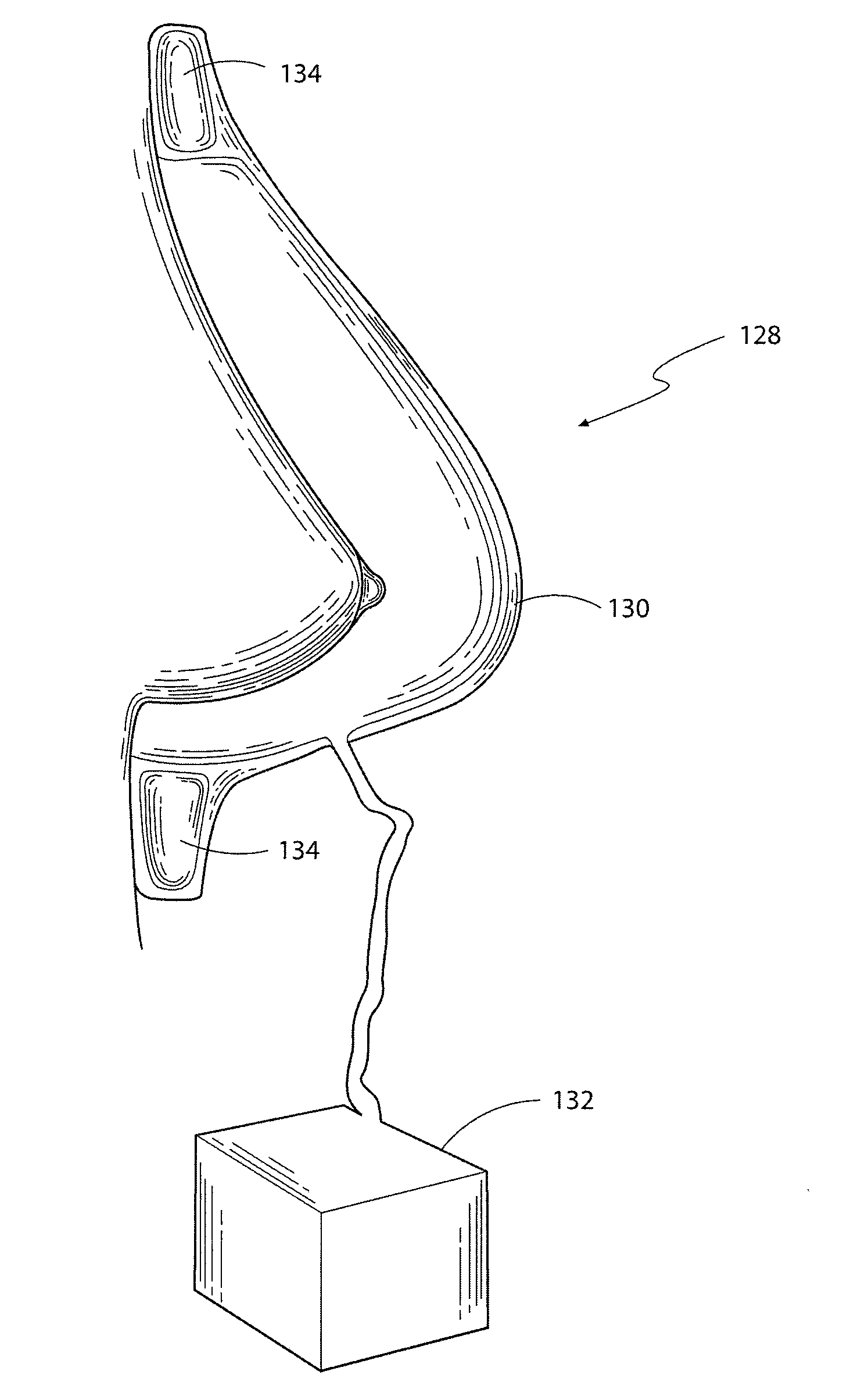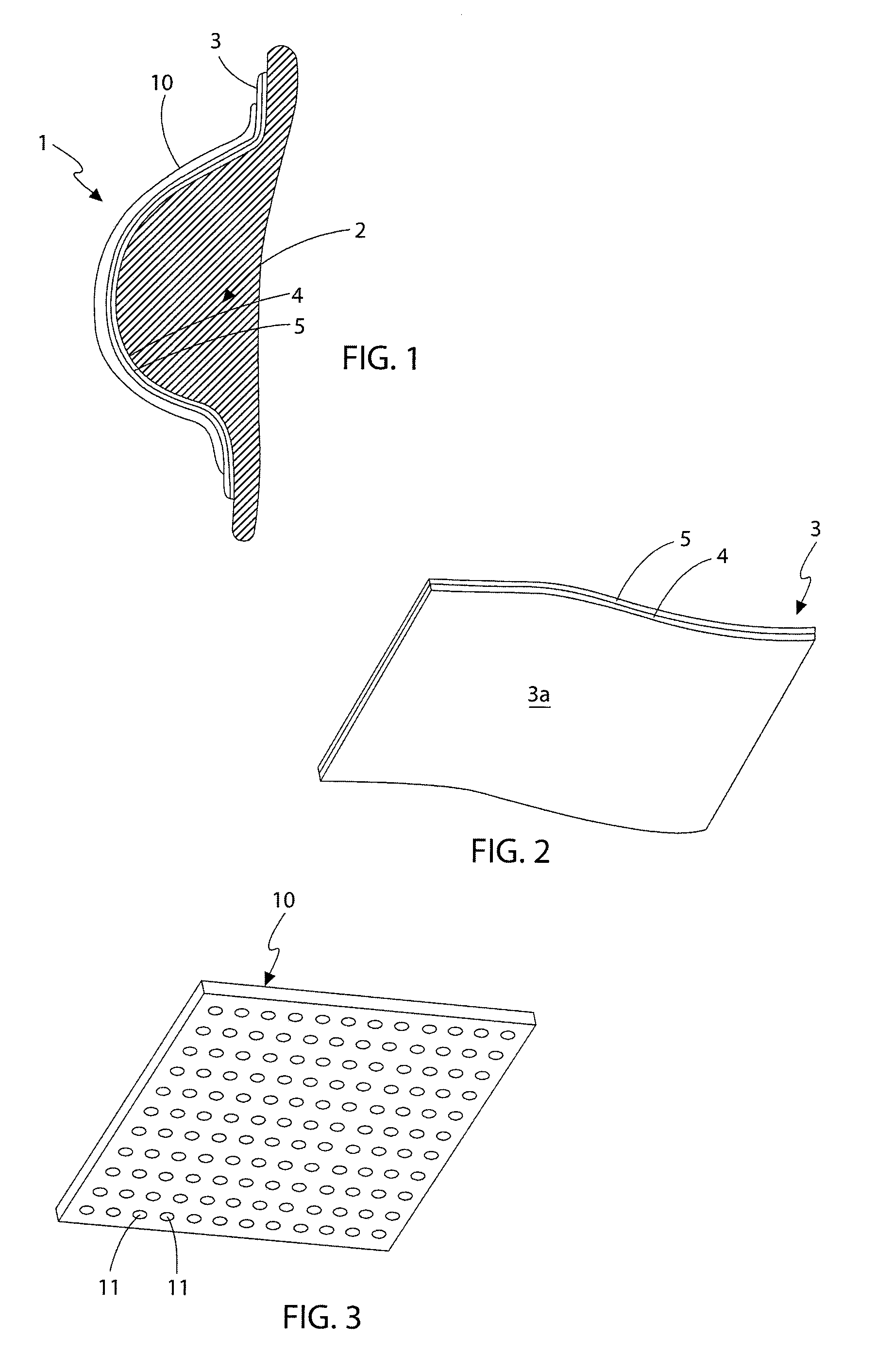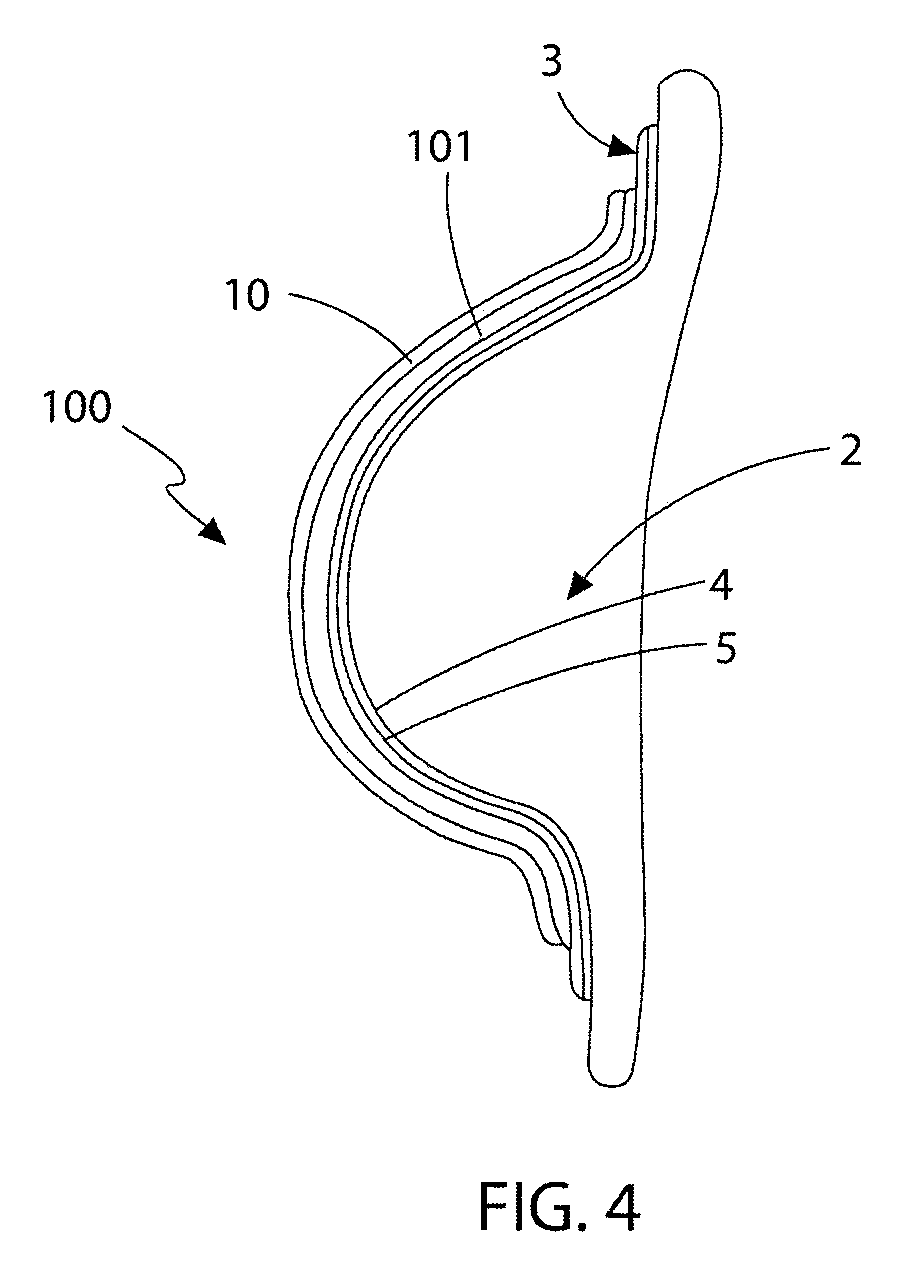Method and devices for tissue expansion
a tissue expansion and tissue technology, applied can solve the problems of reducing the effectiveness of tissue expansion induced by grafts, limited tissue engineered organs, and general limitations in the field of tissue engineering solid organs, so as to maintain the shape and volume of the body area, safe and comfortable wear, and high biocompatibility with the skin
- Summary
- Abstract
- Description
- Claims
- Application Information
AI Technical Summary
Benefits of technology
Problems solved by technology
Method used
Image
Examples
Embodiment Construction
[0109]With reference to FIGS. 1 to 3, the first embodiment is generally referred to as 1. The device (1) is intended to be applied to the soft tissue body area subject to tissue expansion. In this instance, and for illustrative purposes only, the body area consists of a breast (2) whose volume was increased, preferably by injecting a physiologically compatible fluid such as saline, or less preferably by grafting properly treated autologous adipose tissue, in each instance optionally preceded by a period of treatment of vacuum or mechanical stimulation. Nevertheless it is understood that the present invention can be applied in the same way in any surgery, aimed at changing the congenital or acquired body profile through fluid injection or adipose tissue graft, such as in the treatment of depressions caused by scars, surgical resections or malformations. The device is not only limited to external skin surfaces but can also be applied to internal defects and to solid organs.
[0110]The d...
PUM
 Login to View More
Login to View More Abstract
Description
Claims
Application Information
 Login to View More
Login to View More - R&D
- Intellectual Property
- Life Sciences
- Materials
- Tech Scout
- Unparalleled Data Quality
- Higher Quality Content
- 60% Fewer Hallucinations
Browse by: Latest US Patents, China's latest patents, Technical Efficacy Thesaurus, Application Domain, Technology Topic, Popular Technical Reports.
© 2025 PatSnap. All rights reserved.Legal|Privacy policy|Modern Slavery Act Transparency Statement|Sitemap|About US| Contact US: help@patsnap.com



